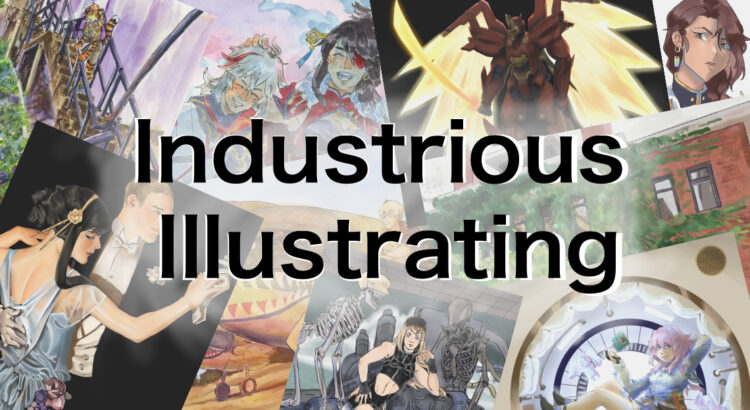Mini Con Ja Nai last Saturday was really great! I enjoyed talking to the people who came by and selling art prints. That just leaves Youmacon on November 4-6 next month before I will likely take a break for a few months from selling my art at conventions.
I haven’t had a lot of time for making observational work or studying new techniques recently between being a full-time student, being the lead artist on an indie game project, and working on expanding my illustration portfolio to sell at conventions, but I have been trying to proactively learn from school assignments to hone my craft and develop my artistic techniques. For one thing, I’m currently taking Intro to Painting (ARTDES 250) at Stamps, which teaches oil painting techniques that I could also apply to digital painting one day.
A recent assignment was to paint whatever we see on the ceiling and use warm/cool colors to make objects seem closer or further away, respectively. I ended up painting a ceiling vent in front of some windows and exaggerated the colors a little while also letting some of the orange underpainting show through for a warm, almost sunset-like look.



My next assignment is to paint a fruit still life using scumbling, which is applying a layer of dry opaque paint over a previous layer of paint so that both colors are visible on the canvas. I only have the yellow underpainting laid down at the moment, but the still life should start to look more distinct once I start to apply further layers of color.
 While the specific application and look of digital paint is usually pretty different from analog/real-life oil paint, I could still try to replicate these techniques using oil paint-esque brushes in a digital painting for a similar effect. Stay tuned to see if you can identify exposed underpainting or scumbling in any of my future paintings!
While the specific application and look of digital paint is usually pretty different from analog/real-life oil paint, I could still try to replicate these techniques using oil paint-esque brushes in a digital painting for a similar effect. Stay tuned to see if you can identify exposed underpainting or scumbling in any of my future paintings!





